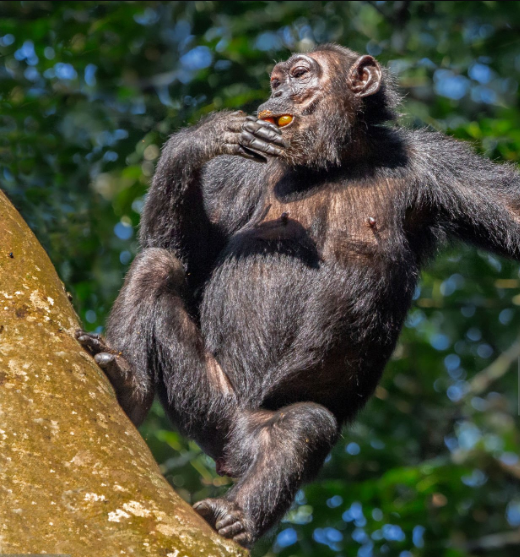Where to See Chimpanzees in Tanzania’s Mahale Mountains: A Journey into the Wild
Tanzania is renowned for its breathtaking landscapes and abundant wildlife, but few places capture the essence of raw, untamed nature like the Mahale Mountains. Nestled along the shores of Lake Tanganyika, this remote paradise is home to one of the most extraordinary wildlife experiences on Earth—encountering wild chimpanzees in their natural habitat. For adventurers, conservationists, and nature lovers alike, trekking through the lush forests of Mahale to observe these intelligent primates is nothing short of life-changing.
Why the Mahale Mountains?
Unlike Tanzania’s more famous destinations like the Serengeti or Ngorongoro Crater, the Mahale Mountains National Park offers an intimate, off-the-beaten-path safari experience. The park is one of the last strongholds for wild chimpanzees, with the M-group, a habituated community of over 60 individuals, providing unparalleled opportunities for close encounters.
What makes Mahale truly special is its untouched wilderness. There are no roads—only winding forest trails leading to hidden waterfalls, crystal-clear streams, and panoramic views of Lake Tanganyika. The sense of isolation heightens the magic of seeing chimpanzees swing through the trees, groom each other, or vocalize in their complex social interactions.
The Chimpanzees of Mahale: A Glimpse into Our Closest Relatives
Chimpanzees share about 98% of their DNA with humans, making them our closest living relatives. Observing them in Mahale is like looking into a mirror of our own evolutionary past. Their behaviors—tool use, hunting, intricate social hierarchies, and emotional expressions—reveal astonishing intelligence.
In Mahale, researchers like Dr. Toshisada Nishida (who began studying these chimpanzees in the 1960s) have documented fascinating aspects of their lives:
Tool Use: They fashion sticks to extract termites or honey, demonstrating problem-solving skills.
Hunting: Unlike other primate groups, Mahale’s chimpanzees hunt red colobus monkeys, showcasing cooperative strategies.
Social Bonds: Grooming sessions strengthen alliances, while alpha males navigate complex power dynamics.
Witnessing these behaviors firsthand is a humbling reminder of the deep connections between humans and the natural world.
Best Time to Visit for Chimpanzee Trekking
The dry season (May–October) is ideal for chimpanzee trekking in Mahale. During these months, the forest is less dense, making it easier to spot the primates. Additionally, chimpanzees tend to stay at lower elevations, increasing the chances of encounters.
However, the wet season (November–April) has its own charm—lush greenery, fewer tourists, and the opportunity to see chimpanzees feasting on seasonal fruits. Just be prepared for muddy trails and occasional rain showers.
How to Get to Mahale Mountains National Park
Reaching Mahale is an adventure in itself. The park is remote, with no direct road access. The most common routes are:
By Air: Charter flights from Arusha or Dar es Salaam land at the park’s airstrip near the lakeshore.
By Lake Tanganyika: Some travelers take a boat from Kigoma, enjoying scenic views along Africa’s deepest lake.
Once there, you’ll stay in eco-friendly lodges or tented camps, where the sounds of the forest and lapping waves create a serene atmosphere.
What to Expect on a Chimpanzee Trek
Trekking to see chimpanzees is both thrilling and physically demanding. Here’s what a typical day looks like:
Early Start: Treks begin at dawn when chimpanzees are most active.
Guided Walks: Expert trackers lead small groups, following fresh nests and vocalizations.
Patience is Key: Finding chimpanzees can take minutes or hours—every trek is different.
Magical Encounters: When you finally spot them, you’ll have one unforgettable hour to observe and photograph (maintaining a respectful distance).
The experience is raw and real—no barriers, no cages. Just you and the wild.
Beyond Chimpanzees: Other Wildlife in Mahale
While chimpanzees are the stars, Mahale’s biodiversity is astounding:
Primates: Red colobus monkeys, blue monkeys, and vervets fill the canopy.
Birds: Over 350 species, including fish eagles and colorful turacos.
Lake Tanganyika: Snorkel or kayak to see cichlid fish found nowhere else.
Conservation Efforts: Protecting Mahale’s Chimpanzees
Habitat loss and poaching threaten chimpanzees across Africa. However, Mahale’s protected status and responsible tourism help safeguard these primates. By visiting, you contribute to conservation through park fees and community initiatives.
A Transformational Experience
Seeing chimpanzees in the Mahale Mountains is more than a wildlife encounter—it’s a profound connection with nature. As you watch a mother cradle her infant or a dominant male assert his status, you’ll feel a deep reverence for these incredible beings.
Mahale reminds us that wild places still exist, where chimpanzees roam free, and adventure awaits those willing to seek it. So pack your boots, bring your curiosity, and step into one of Africa’s last great wildernesses. The chimpanzees are waiting.

